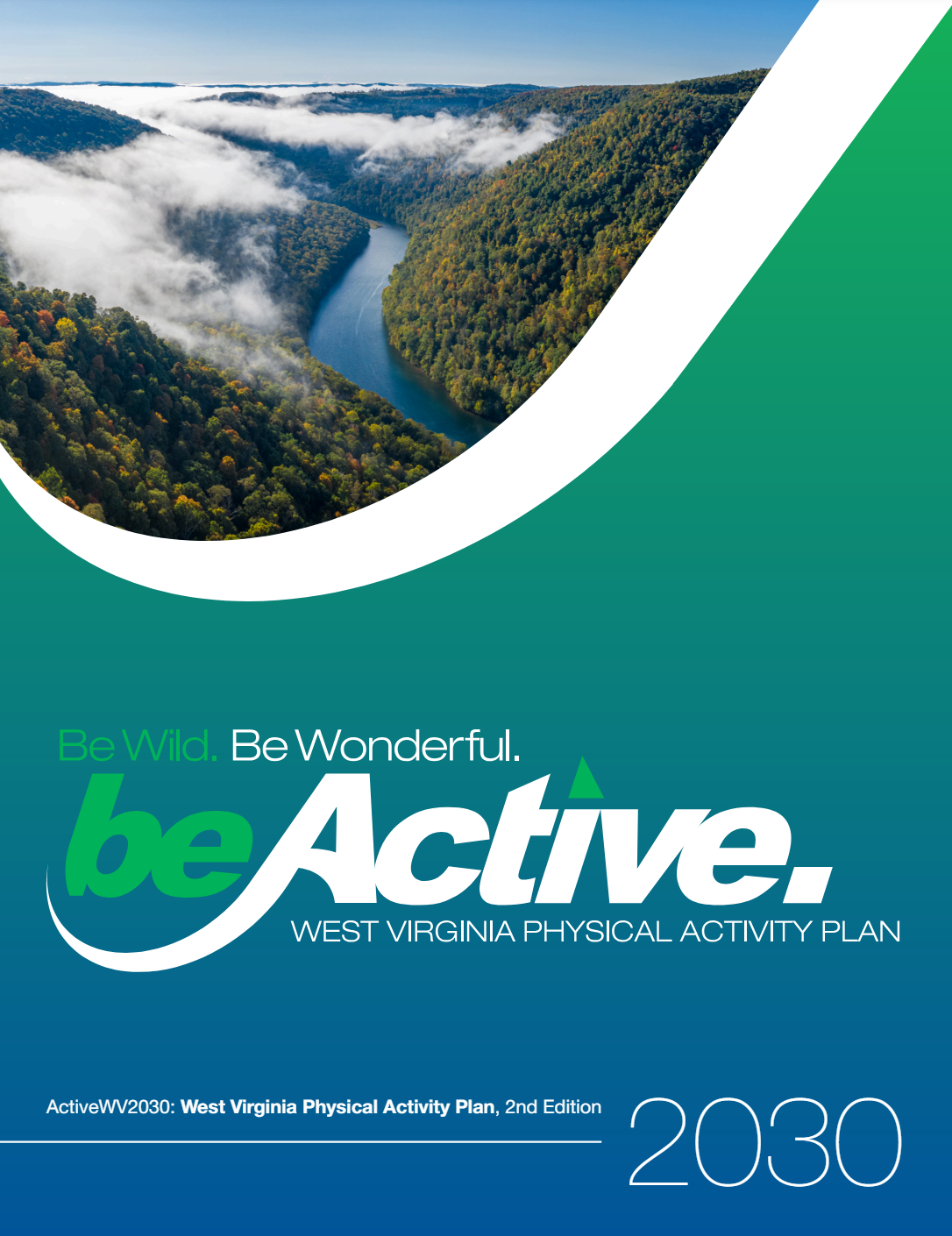West Virginia is wild and wonderful! We live in rural Appalachia with its scenic mountain landscape, welcoming people, and rich cultural heritage. While the people of West Virginia take great pride in the beauty of the natural surroundings and traditions of their Appalachian heritage, a number of disparities related to quality of life persist when compared to other geographic regions of the United States. West Virginia consistently ranks as one of the most disadvantaged in relation to a variety of health indicators including obesity, heart disease, and diabetes. These chronic health problems have multiple contributing biological, psychological, social, and environmental factors. Faced with this reality, West Virginians must continue to work together to reduce risk for chronic disease and manage the associated impact on mortality, morbidity, quality of life, and economic viability.
Physical activity is one of the most important behaviors that West Virginians of all ages can adopt to improve their health status. The relationship between regular physical activity and reduced risk for chronic disease is well established, and small to moderate increases in physical activity offer significant health-related benefits. A little physical activity goes a long way!
Our collective challenge is to find feasible solutions to this public health concern that make a physically active lifestyle the easy choice for every West Virginian. The original version of the West Virginia Physical Activity Plan was released in 2012 and was our first attempt to identify cross-sector strategies and tactics tailored to the unique problems in the mountain state. Modeled on the National Physical Activity Plan, we adapted priorities to fit the specific demographic, cultural, and geographical challenges to physical activity in the mountain state. Since that time, many dedicated professionals have worked to implement programs, community initiatives, legislation, improved access, and policies related to physical activity.


The goal of the updated Plan – ActiveWV 2030- released in May 2024 is to is to increase the physical activity levels of children, adults, and older adults to meet or exceed the Physical Activity Guidelines for Americans, and to therefore improve the health and quality of life of West Virginians. The achievement of these outcomes is dependent on the establishment of a culture that facilitates physically active lifestyles in every societal sector and geographic region, regardless of the various environmental, social, and individual barriers that people may face.
The target audience for the ActiveWV 2030: Physical Activity Plan includes: (a) policy leaders at the local and state levels, (b) key stakeholders representing state and local groups in each societal sector who can assist with plan implementation and evaluation, and (c) West Virginians who can promote physical activity in their communities and advocate for personal, policy, and environmental change.
Mirroring from the National Physical Activity Plan, the West Virginia Physical Activity Plan is organized around ten societal sectors identified as key contributors to promoting physical activity as a public health priority:
- Business and Industry
- Community Recreation, Fitness, and Parks
- Education
- Faith-Based
- Healthcare
- Media and Communications
- Military Settings
- Public Health
- Sport
- Transportation, Land Use, and Community Design


